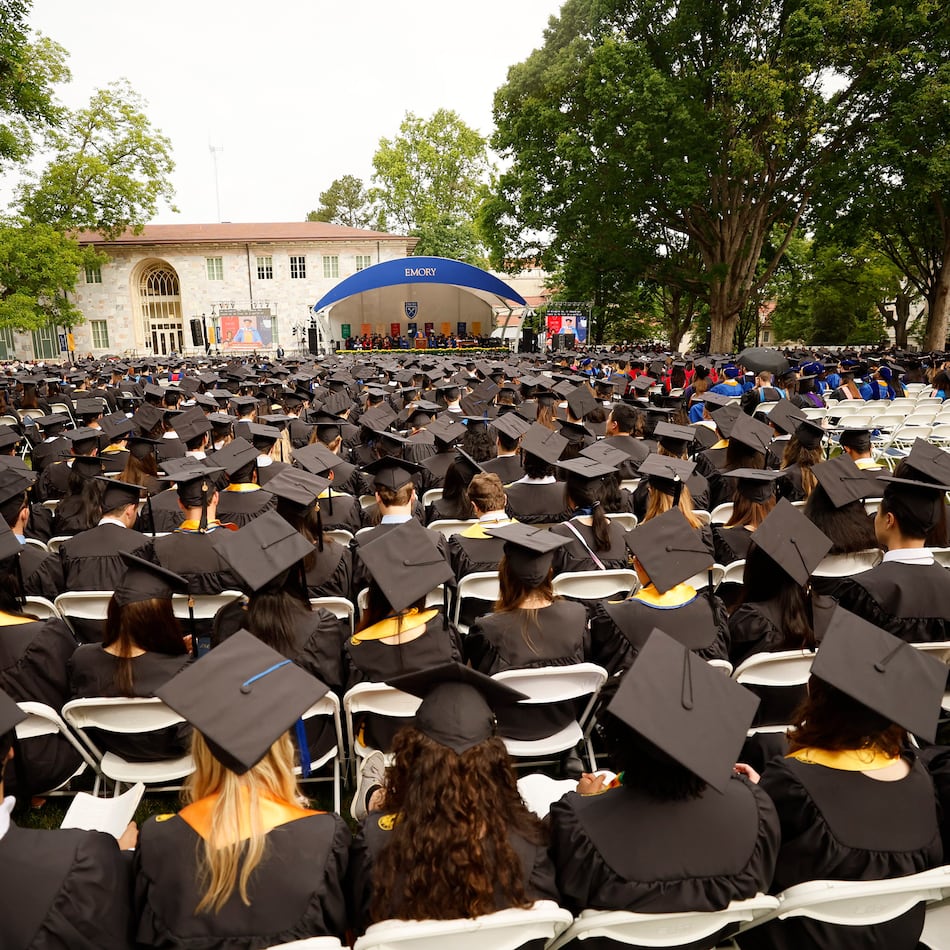Emory University expected some interest after it redesigned its financial aid in 2007 to provide assistance to the often overlooked middle-class.
Then the recession hit. It took away jobs and depleted the savings accounts, stock portfolios and home equity many middle-class families assumed would pay for college. As a result, Emory is spending nearly twice as much as planned to make college affordable for low- and middle-income families.
The program -- Emory Advantage -- provides grants to students whose families earn less than $50,000 a year so they graduate debt free. Students whose families earn between $50,000 and $100,000 a year won't graduate with more than $15,000 in debt. Tuition is $38,600 a year.
President James Wagner predicted to spend about $3.5 million on the program annually, but it costs more than $6 million. Emory's institutional budget is about $3 billion, including health care. About 11 percent of undergraduates, nearly 800 students, use the program.
"This has cost us more than we imagined," Wagner said. "I imagined we'd attract some people with this program, but I was surprised by how many. We committed to pay for it and we're sticking with it."
Within weeks of Emory announcing its program, Harvard University, Yale University and others announced similar plans for middle-income families.
These packages represented a shift from colleges focusing on merit-based aid for high-scoring students, some of whom came from families that didn't need financial assistance. The goal was to make college more affordable, while promoting economic diversity on campus, Wagner said. It also made private colleges more competitive on price with top public colleges.
Emory uses need-blind admissions, meaning anyone who is academically qualified will be accepted regardless of financial need. Some students said they couldn't attend without the aid.
Kyle Black applied to Emory as fluke. He didn't think he'd get in to a college ranked among the top 20 in the country and wondered how he'd pay for it. He'll graduate debt free this spring.
"When I got the financial aid packet and it said everything was covered I thought it was a mistake and went to the financial aid office to get it fixed," said Black, who is from Jonesboro. "You realize that diversity isn't just about skin color. It's about the different ideas and backgrounds and history people have. I've had the chance to learn about different perspectives in politics and life just by being here."
While that diversity is one reason private colleges started these programs, some have backed off because it's too expensive. The weak economy that caused more families to need the program also hurt the endowments and fund-raising efforts colleges relied on to finance the aid. Williams and Dartmouth colleges announced plans earlier this year to scale back on their no loan programs.
Emory set a target of a $75 million endowment to pay for the program. Wagner said they're not at that goal and would need $120 million to cover current costs. Emory has used operational money to make up the difference, he said. The Decatur campus doesn't have construction cranes now and the college stopped talking about increasing the program's income cap to $125,000, he said.
Evan Dunn, a junior from Kennesaw, said people are floored when told he will graduate without debt. The average debt from a four-year public or private college in Georgia is $16,568, according to the Project on Student Debt.
"I've really built a family here," Dunn said. "I know it sounds corny but Emory helped mold me into an adult. I'm just so thankful I can do this. I'm just so thankful I can afford this."
About the Author
The Latest
Featured
